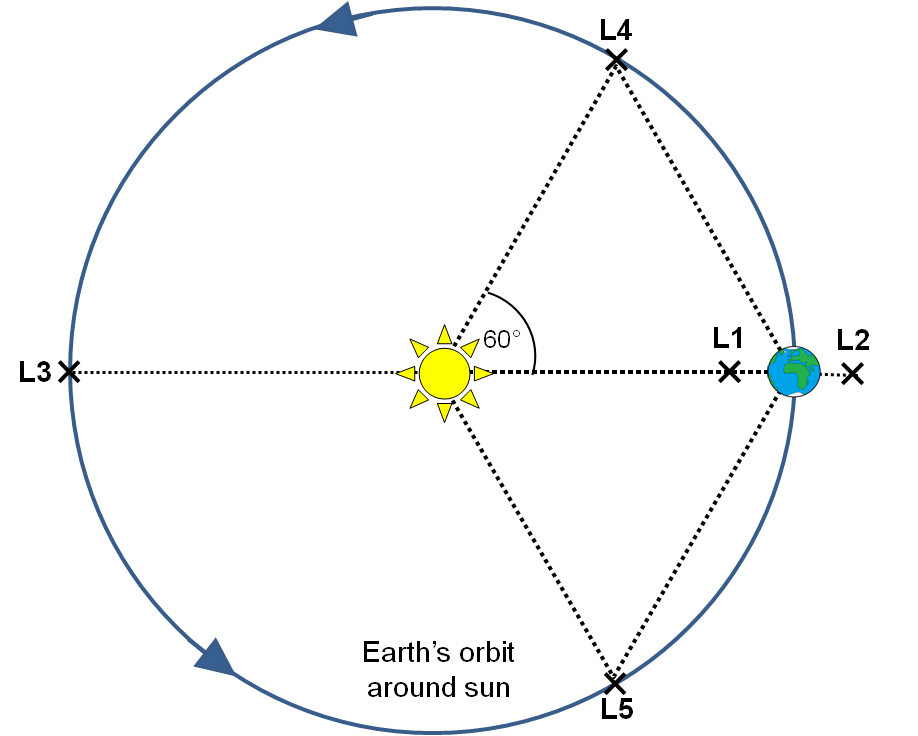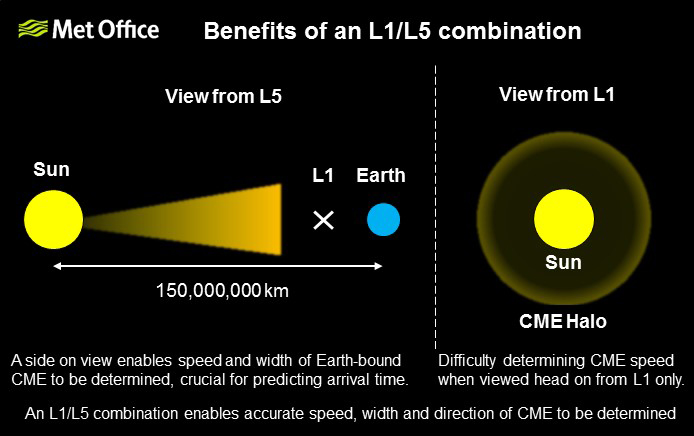Vigil mission
A spacecraft located in the L5 position will greatly increase space weather forecasting capabilities.
More observations will enable us to monitor the Sun for solar flares and coronal mass ejections (CMEs) and help us track them on route to the Earth giving more timely forecasts. This is turn will help critical national infrastructure (CNI) providers better prepare for the severe events as described in the National Risk Register (added in 2011).
What is L5?
L5, refers to the 5th Lagrange point of the Sun-Earth gravitational system. A Lagrange point is a point in space where the gravitational pull of two objects cancel out (in this case the Sun and Earth), resulting in gravitational equilibrium. Any spacecraft positioned at a Lagrange point would experience a stable orbit and remain in the same place relative to the Earth and Sun.
 |
Currently the NOAA DSCOVR and NASA SOHO at the L1 point provide observations for space weather forecasting. The L5 point is 149,000,000 km from both the Earth and Sun, trailing behind the Earth in its orbit. A spacecraft here would provide a unique perspective on the Sun-Earth system. |
Vigil Mission
The Vigil mission to place a satellite at the L5 point was confirmed as part of a UK Government announcement at the European Space Agency Council of Minister meeting in November 2022.
Vigil will greatly improve space weather forecasting capabilities, with the Met Office Space Weather Operations Centre one of a number of centres that will benefit from the new satellite.
Why is the Vigil mission important?
CMEs are large bursts of plasma from the surface of the sun and can reach the Earth in 18-96 hours, depending on its speed and direction. Given the right conditions, a geomagnetic storm associated with CME arrival can disrupt national power grids and global satellite and navigation networks.
Given the potential impacts, forecasting CME arrival time is crucial for reducing the impact to national infrastructure. Currently, with the satellite imagery available, determining the direction, speed and width of a CME accurately is challenging. The Vigil mission will allow a better calculation of these factors and greatly increase the precision of CME arrival.

Why is current imagery not good enough?
It is difficult to estimate how quickly a CME is coming towards Earth when only viewed from L1. The NASA STEREO mission launched in 2006 saw two probes, STEREO-A and STEREO-B, orbit the Sun in a similar path to Earth. They temporarily gave us side on views and demonstrated how useful this can be. An L5 satellite would remain in a stable orbit permanently, resulting in continuous observations of critical regions of the Sun.

2015 and 2017 both held a workshop of international space weather experts, the summaries of which can be found here:





